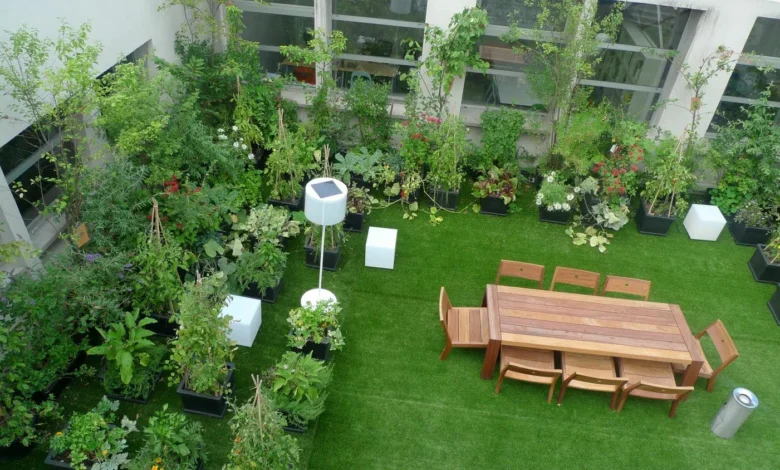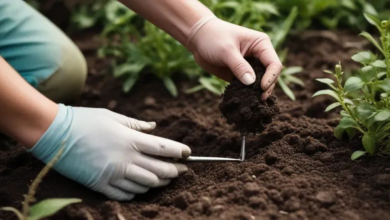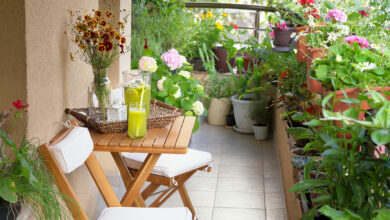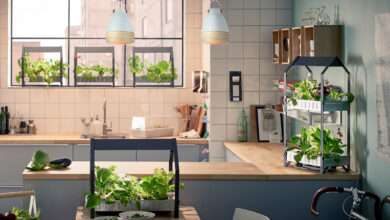How to Start a Rooftop Garden in the City
Transform your urban space into a green oasis! Learn how to start a rooftop garden with expert tips on setup, plant selection, and maintenance.

In today’s rapidly urbanising world, where concrete jungles dominate the landscape and green spaces become increasingly scarce, Start a Rooftop Garden has emerged as a revolutionary solution for city dwellers seeking to reconnect with nature. The art of transforming bare rooftops into flourishing urban gardens represents more than just a gardening trend – it’s a sustainable lifestyle choice that addresses multiple challenges of modern city living.
Starting a rooftop garden offers an incredible opportunity to maximise your living space while contributing to environmental sustainability. Whether you’re a seasoned gardener looking to expand your growing area or a complete beginner eager to cultivate your first plants, a rooftop garden setup can transform your urban experience in ways you never imagined. From providing fresh, homegrown vegetables and herbs to creating a peaceful retreat above the bustling city streets, a well-planned city rooftop garden serves as your personal sanctuary in the sky.
The benefits of urban rooftop gardening extend far beyond personal satisfaction. These elevated gardens help reduce the urban heat island effect, improve air quality, manage stormwater runoff, and increase biodiversity in densely populated areas. Moreover, container gardening on rooftops has proven to be an accessible entry point for those who may not have access to traditional ground-level gardening spaces.
As we delve into this comprehensive guide, you’ll discover that rooftop garden maintenance requires specific knowledge and techniques different from conventional gardening methods. The unique challenges of wind exposure, weight limitations, and extreme temperature fluctuations demand careful planning and strategic plant selection. However, with proper preparation and the right approach, your rooftop can become a thriving ecosystem that provides years of enjoyment and harvest.
This detailed guide will walk you through every aspect of creating and maintaining a successful Start a Rooftop Garden, from initial assessment and planning to ongoing care and seasonal considerations. Whether you’re working with a small apartment balcony or an expansive commercial rooftop, the principles and techniques outlined here will help you create a sustainable, productive, and beautiful garden space that enhances both your quality of life and your urban environment.
Chapter 1: Planning Your Rooftop Garden Project

1.1 Assessing Your Rooftop Space
Before diving into rooftop garden setup, conducting a thorough assessment of your available space is crucial for long-term success. Urban rooftop gardening requires careful evaluation of several critical factors that will determine the scope and design of your garden project.
Weight capacity analysis represents the most fundamental consideration when starting a rooftop garden. Most residential rooftops can safely support 20-25 pounds per square foot, while commercial buildings may handle significantly more. Consult with a structural engineer if you’re planning an extensive garden, as soil, water, planters, and mature plants can add substantial weight to your rooftop structure.
Sun exposure mapping throughout the day will guide your plant selection and garden layout decisions. Observe your rooftop space during different times and seasons to identify full sun areas (6+ hours of direct sunlight), partial sun zones (3-6 hours), and shaded sections. This information becomes invaluable when choosing appropriate plants for each area of your city rooftop garden.
Wind patterns on rooftops can be significantly more intense than at ground level, creating unique challenges for rooftop garden maintenance. Identify prevailing wind directions and consider how tall buildings or structures might create wind tunnels or protected microclimates. This knowledge will help you plan windbreaks and choose plants that can withstand your specific conditions.
1.2 Legal Considerations and Permissions
Understanding the legal requirements for urban rooftop gardening prevents potential complications down the road. Building codes, homeowner association rules, and local regulations can vary significantly depending on your location and building type.
Research local zoning laws and building codes that may restrict Start a Rooftop Garden installations. Some cities have specific regulations regarding rooftop modifications, while others actively encourage green roof initiatives through incentive programs. Contact your local building department to understand permit requirements, especially if you plan to install permanent structures or irrigation systems.
For renters interested in starting a rooftop garden, obtaining written permission from property owners or management companies is essential. Present a detailed plan highlighting the benefits and addressing potential concerns about structural integrity, water damage, or property modifications. Many landlords appreciate tenants who improve property value through sustainable landscaping initiatives.
Chapter 2: Design and Layout Strategies
2.1 Creating Functional Garden Zones
An effective rooftop garden setup relies on thoughtful space division that maximises both productivity and aesthetics. Container gardening on rooftops allows for flexible arrangements that can be modified as your garden evolves and your needs change.
Production zones should receive the most sunlight and be easily accessible for daily maintenance tasks. Designate areas for vegetable gardens, herb spirals, and fruit trees based on their specific sunlight and space requirements. Urban gardens benefit from vertical growing systems that maximise growing area while minimising footprint.
Recreation areas within your Start a Rooftop Garden provide spaces for relaxation and enjoyment of your green oasis. Consider incorporating seating areas, pathways, and decorative elements that complement your planting scheme. These zones can feature ornamental plants, fragrant herbs, and flowering species that attract beneficial pollinators.
Storage and utility zones accommodate the practical needs of rooftop garden maintenance. Plan space for tools, watering equipment, compost bins, and seasonal plant protection materials. Efficient organisation of these elements keeps your garden functional and visually appealing.
2.2 Selecting Appropriate Containers and Planters
Container gardening on rooftops requires careful selection of appropriate vessels that balance plant needs with weight restrictions and aesthetic considerations. The success of your city rooftop garden largely depends on choosing containers that provide adequate root space while remaining manageable for maintenance tasks.
Weight considerations should guide every container decision in urban rooftop gardening. Lightweight materials such as fibreglass, resin, and fabric grow bags offer excellent alternatives to traditional ceramic or concrete planters. Consider the total weight, including soil, plants, and water, when planning container placement.
Drainage requirements become critical in Start a Rooftop Garden environments where excess water has nowhere to go except through your containers. Ensure all planters have adequate drainage holes and consider adding drainage layers of gravel or expanded clay pebbles. Poor drainage leads to root rot and plant death, making this aspect crucial for successful rooftop garden maintenance.
Size specifications for different plant types ensure healthy growth and productive harvests. Deep-rooted vegetables like tomatoes and peppers require containers at least 18 inches deep, while shallow-rooted crops like lettuce and herbs can thrive in 6-8-inch deep planters. Plan container sizes based on your intended plantings to optimise space utilisation.
Chapter 3: Plant Selection for Urban Environments
3.1 Choosing Wind and Heat-Resistant Varieties
Start a Rooftop Garden requires selecting plants specifically adapted to the challenging conditions of urban environments. Rooftop garden plants must withstand intense sunlight, strong winds, temperature extremes, and limited root space while still producing satisfactory results.
Wind-tolerant vegetables form the backbone of productive urban rooftop gardening. Compact varieties of tomatoes, peppers, and eggplants perform well when properly staked and protected. Root vegetables like carrots, radishes, and beets naturally resist wind damage due to their low-growing habits and can thrive in container gardening on rooftop systems.
Heat-resistant herbs provide both culinary value and natural pest deterrence in city rooftop garden settings. Mediterranean herbs, including rosemary, thyme, oregano, and sage, actually prefer the intense sunlight and well-draining conditions typical of rooftop environments. These plants also require minimal water once established, making rooftop garden maintenance more manageable during hot summer months.
Drought-tolerant flowering plants add beauty and attract beneficial insects to your urban garden. Marigolds, nasturtiums, zinnias, and sunflowers can withstand the challenging conditions while providing colour and supporting local pollinators. These flowers also serve as companion plants that can improve the health and productivity of your vegetable crops.
3.2 Vertical Growing Solutions
Maximising growing space through vertical techniques is essential for a successful rooftop garden setup in limited urban areas. Vertical gardening systems allow you to grow more plants in less space while creating attractive living walls that provide privacy and wind protection.
Trellising systems support vining crops like cucumbers, beans, and peas while making efficient use of vertical space. Install sturdy trellises that can withstand wind loads and provide adequate support for mature plants loaded with fruit. These structures also create microclimates that protect more delicate plants growing in their shelter.
Tiered container arrangements create multiple growing levels that maximise sun exposure for different plants. Arrange containers in stair-step formations or use shelving systems designed for outdoor use. This approach works particularly well for container gardening on rooftops, where space efficiency is paramount.
Living wall systems provide dramatic vertical growing surfaces perfect for herbs, leafy greens, and flowering plants. These systems can be purchased commercially or constructed from recycled materials, making them accessible for various budget levels while contributing to sustainable urban rooftop gardening practices.
Chapter 4: Soil, Water, and Nutrition Management
4.1 Selecting the Right Growing Medium
Start a Rooftop Garden depends heavily on choosing appropriate growing media that provide plant nutrition while remaining lightweight and well-draining. Traditional garden soil is too heavy and poorly suited for container gardening on rooftops, making specialised potting mixes essential.
Lightweight potting mixes designed for container growing offer the ideal balance of drainage, aeration, and water retention needed for urban rooftop gardening. Look for mixes containing perlite, vermiculite, or coconut coir that provide structure while reducing overall weight. Avoid mixes containing heavy materials like sand or topsoil that add unnecessary weight to your rooftop garden setup.
Soil amendment strategies improve long-term soil health and plant productivity in city rooftop garden environments. Regularly incorporate compost, worm castings, and organic fertilisers to maintain soil fertility and structure. Rooftop garden maintenance should include periodic soil testing to monitor pH levels and nutrient availability.
Water retention techniques help maintain consistent soil moisture despite the challenging conditions of Start a Rooftop Garden. Add water-retaining crystals or gel polymers to potting mixes to reduce watering frequency. Mulching container surfaces with organic materials also helps conserve moisture and regulate soil temperature.
4.2 Efficient Irrigation Systems
Water management represents one of the most critical aspects of successful urban rooftop gardening. Rooftop gardens face unique watering challenges due to increased evaporation, wind exposure, and the need to prevent water damage to building structures.
Drip irrigation systems provide efficient, consistent watering that minimises water waste while ensuring plants receive adequate moisture. These systems can be automated with timers and moisture sensors, reducing the daily maintenance burden of Start a Rooftop Garden. Install drip systems with pressure-compensating emitters to ensure uniform water distribution across all containers.
Rainwater harvesting offers a sustainable water source for your city rooftop garden while reducing utility costs and environmental impact. Install rain barrels or cisterns to collect runoff from roof surfaces, ensuring proper filtration if collecting from treated roof materials. This practice aligns with sustainable urban gardening principles while providing plants with naturally soft water.
Greywater recycling systems can supplement irrigation needs by reusing household wastewater from sinks and showers. Ensure greywater systems comply with local regulations and use biodegradable soaps to protect plant health. This approach maximises water efficiency in rooftop garden maintenance routines.
Chapter 5: Structural and Safety Considerations

5.1 Weight Distribution and Load Management
Starting a rooftop garden requires careful attention to structural engineering principles to ensure building safety and garden longevity. Weight distribution across rooftop surfaces prevents concentrated loads that could damage building structures or create safety hazards.
Load calculation methods help determine safe weight limits for different areas of your Start a Rooftop Garden. Calculate the combined weight of containers, soil, plants, and water at maximum capacity, then distribute this load across multiple support points. Professional structural assessment may be necessary for extensive urban rooftop gardening projects.
Support system installation may be required for heavy planters or garden structures in your city’s rooftop garden. Use load-bearing pedestals or platforms that distribute weight across multiple roof joists. These systems also improve drainage and prevent container contact with roofing materials, extending the life of both your garden and your roof.
5.2 Wind Protection and Plant Security
Wind management is crucial for Start a Rooftop Garden success, as elevated positions experience significantly stronger winds than ground-level gardens. Windbreaks and plant protection systems prevent damage while creating more comfortable growing conditions.
Windbreak installation using screens, fences, or planted barriers reduces wind speed and creates protected microclimates within your urban garden. Design windbreaks to filter wind rather than block it completely, as solid barriers can create turbulent downdrafts that damage plants. Permeable materials like mesh fabric or bamboo screening work effectively for rooftop garden wind protection.
Plant anchoring systems secure containers and tall plants against strong winds common in Start a Rooftop Garden environments. Use tie-downs, stakes, and weighted bases to prevent containers from tipping or sliding during storms. Regular inspection of anchoring systems should be part of routine rooftop garden maintenance.
Chapter 6: Seasonal Care and Maintenance
6.1 Year-Round Garden Management
Rooftop garden maintenance requires season-specific strategies that address the unique challenges of elevated growing environments. Urban rooftop gardening success depends on adapting care routines to seasonal changes in weather, plant needs, and growing conditions.
Spring preparation involves assessing winter damage, refreshing growing media, and planning new plantings for your rooftop garden. Clean and repair containers, check irrigation systems, and prune damaged plant material. Start seeds indoors for transplanting as weather permits, and gradually acclimate plants to outdoor conditions through hardening-off processes.
Summer management focuses on water conservation, heat stress prevention, and pest monitoring in your city’s rooftop garden. Increase watering frequency during hot weather, provide shade for sensitive plants, and maintain consistent rooftop garden maintenance schedules. Monitor plants closely for signs of stress and adjust care routines accordingly.
Fall activities prepare your urban garden for winter while extending the growing season through season extension techniques. Harvest mature crops, plant cool-season vegetables, and begin winterisation preparations. Clean up plant debris and compost healthy material to maintain garden hygiene.
6.2 Winter Protection Strategies
Winter care for rooftop gardens requires specialized techniques to protect plants from extreme cold, wind, and freeze-thaw cycles common in elevated positions. Container gardening on rooftops presents unique challenges during cold months that require proactive management.
Insulation techniques protect plant roots from freezing temperatures that can damage or kill plants in exposed containers. Wrap containers with insulating materials, group pots together for mutual protection, and move sensitive plants to protected areas when possible. Start a Rooftop Garden. Containers experience more extreme temperature fluctuations than ground-planted gardens.
Structural winter protection prevents damage to garden infrastructure during severe weather events. Secure loose items, drain water systems to prevent freeze damage, and protect permanent structures from ice and snow loads. Proper winter preparation ensures your urban rooftop garden emerges healthy and ready for spring growth.
More Read: Why Every Garden Needs Native Wildflowers
Conclusion
Creating a successful Start a Rooftop Garden transforms urban living by bringing nature into city environments while providing fresh food, beautiful flowers, and peaceful retreat spaces. Starting a rooftop garden requires careful planning, appropriate plant selection, and ongoing maintenance, but the rewards far exceed the initial investment of time and resources.
The techniques and strategies outlined in this comprehensive guide provide the foundation for successful urban rooftop gardening projects of any scale. From small container gardens on apartment balconies to extensive green roof installations, the principles remain consistent: proper planning, appropriate plant selection, efficient resource management, and attentive maintenance.
Rooftop garden maintenance becomes easier and more enjoyable as you gain experience and develop routines suited to your specific conditions and plant selections. The unique challenges of city rooftop garden environments – wind, heat, limited space, and weight restrictions – can be overcome through thoughtful design and proven techniques.
Your urban garden contributes to environmental sustainability while providing personal satisfaction and community benefits. Rooftop gardens help mitigate urban heat islands, manage stormwater, improve air quality, and increase urban biodiversity. These environmental benefits extend beyond individual properties to create positive impacts throughout urban communities.
As urban populations continue to grow and available green space diminishes, Start a Rooftop Garden represents an essential strategy for sustainable city living. The skills and knowledge gained from container gardening on rooftops can be applied to various urban growing situations, making you a more versatile and successful urban gardener.
Start small, learn from experience, and gradually expand your Start a Rooftop Garden as your skills and confidence develop. The journey from bare rooftop to thriving garden oasis is both rewarding and achievable with proper guidance and persistent effort. Your urban sanctuary awaits – begin your rooftop gardening adventure today and discover the joys of growing your own food and flowers high above the bustling city streets.











